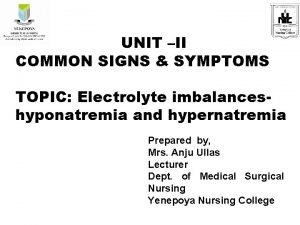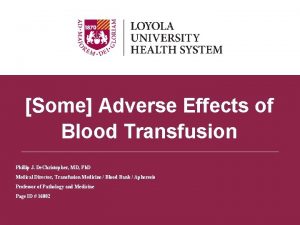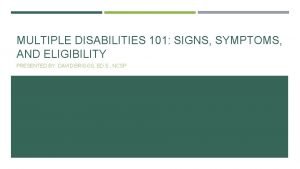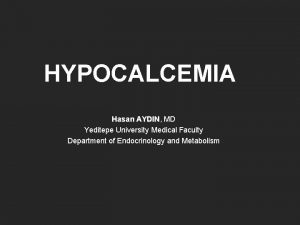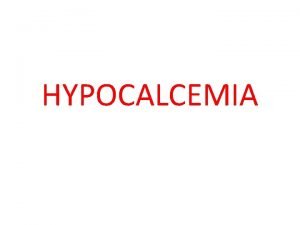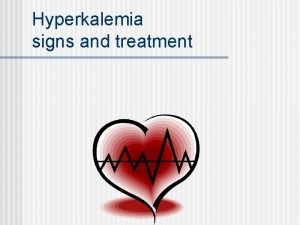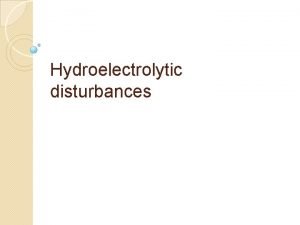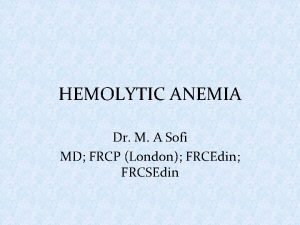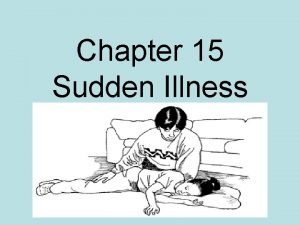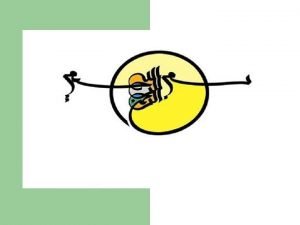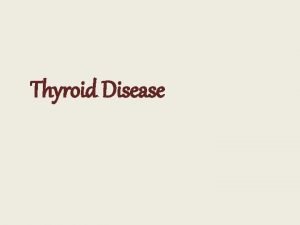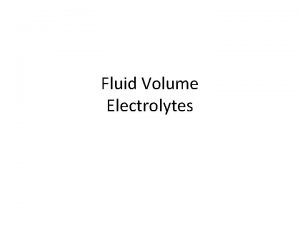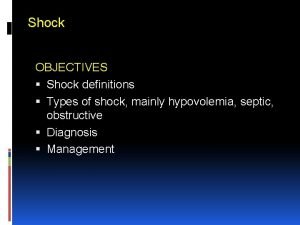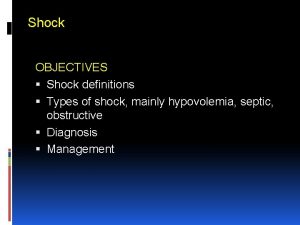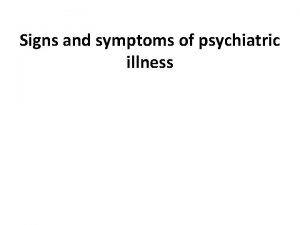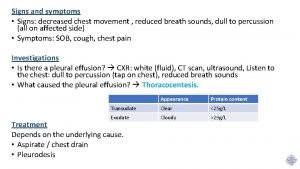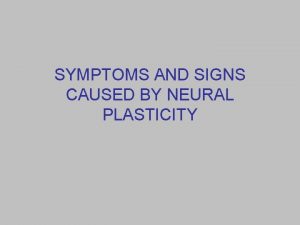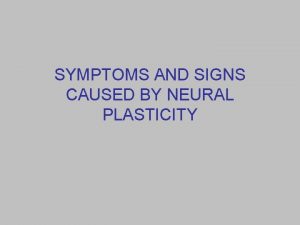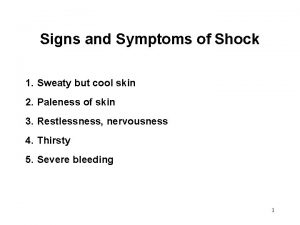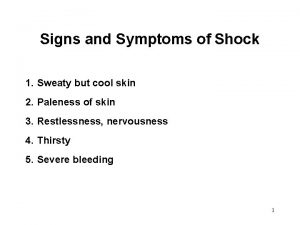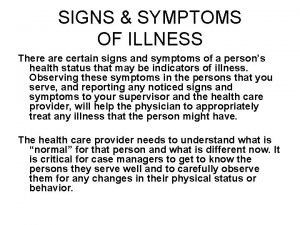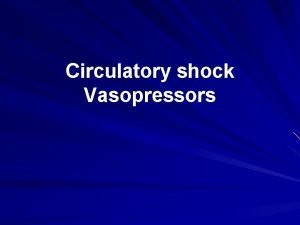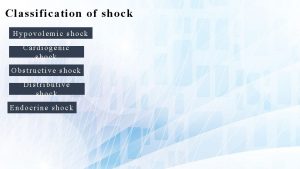Shock Outlines Definitions Signs and symptoms of shock




















- Slides: 20

Shock

Outlines • Definitions • Signs and symptoms of shock • Classification • General principles of management • Specific types of shock

Definitions Shock: is a disturbance of circulation leading to inadequate perfusion of vital tissues and with a wide variation of systemic effects. Normal tissue perfusion: requires three intact mechanisms: 1 - A functioning pump (heart) 2 - Adequate volume (blood and plasma) 3 - An intact vascular system

DHSR Approved Curriculum-Unit 1

1 - confusion and delirium. 2 - scared appearance. 3 - rapid and shallow respiration. 4 - rapid and weak pulse. 5 - cold and pale skin. 6 - nausea and vomiting. 7 - reduced blood pressure.

Classification of Shock by cause

Caused by blood or plasma loss due to: A- Burns. B- Bleeding peptic ulcer. C- Ruptured varices. D- Extensive fractures. E- Crushing accidents. F- External or internal injuries.

Inability of heart to pump needed blood: Causes: 1 - myocardial infarction. 2 - cardiac arrhythmia. 3 - pulmonary embolism. 4 - myocardial contusion.

Caused by failure of nervous system to control diameter of blood vessels. Causes: 1 - severe pain. 2 - spinal injury.

Allergic shock. Functioning blood vessels is disturbed by sensitivity to injection of a foreign substance. Causes: 1 - insect stings. 2 - certain medicines (antibiotics)

Occurs in severe infections. Exotoxins of gram +ve bacteria (staph aureus) Endotoxins of gram –ve bacteria (E coli) Exotoxin (cell-protein-heat liable) Endotoxin (cell wall – lipid – heat stable)

General principles of management

1 - Carry standard CPR first aid to maintain an open airway, monitor breathing, and prevent further blood loss. 2 - oxygen to assist respiration. 3 - position: depending on problem • Lower extremity elevation (improve circulation). • Supine position in fracture of extremities


• Position an unconscious casualty Semi prone Position on his side with his head turned so fluids can drain from his mouth. Maintains airways open and provide best drainage of vomiting.

Cont. 4 - control bleeding. 5 - keep normal temperature: cover patient with blanket, remove wet clothings. 6 - start I. V line. 7 - drug therapy according to physician’s order. 8 - monitor all vital signs. 9 - avoid movement (head , spine, neck injury)

Specific types of shock Hypovolemic shock: • Replace volume therapy by I. V fluids • In massive hemorrhage, more than one I. V line is required.

Cardiogenic shock • • • Continuous oxygen to combat hypoxia. Correct hypovolemia. Appropriate therapy. Measure urine volume (catheter). Monitor arterial blood gases.

Septic shock • I. V antibiotic therapy. • Continue appropriate therapy after culture and sensitivity results. Anaphylactic shock • • • Ensure open airways. Oxygen administration. Monitor blood pressure. Start I. V line. Hydrocortisone administration. Antihistaminic.

HANK YOU
 Symptoms of shock
Symptoms of shock Signs signs everywhere signs meaning
Signs signs everywhere signs meaning Sore boobs early pregnancy
Sore boobs early pregnancy Hyperkalemia signs and symptoms
Hyperkalemia signs and symptoms Sexual abuse signs and symptoms
Sexual abuse signs and symptoms Signs and symptoms of trali
Signs and symptoms of trali Sexual abuse signs and symptoms
Sexual abuse signs and symptoms Neuroblastoma signs and symptoms
Neuroblastoma signs and symptoms Signs and symptoms of multiple disabilities
Signs and symptoms of multiple disabilities Trousseau sign
Trousseau sign Hypocalcemia signs and symptoms
Hypocalcemia signs and symptoms Signs of hyperkalemia
Signs of hyperkalemia Low potassium symptoms
Low potassium symptoms Hemolysis ldh haptoglobin
Hemolysis ldh haptoglobin Dka differential diagnosis
Dka differential diagnosis Signs and symptoms of sudden illness
Signs and symptoms of sudden illness Portal hypertension symptoms
Portal hypertension symptoms Hyperkalemia signs and symptoms
Hyperkalemia signs and symptoms Signs and symptoms of trali
Signs and symptoms of trali Carbimazole dose
Carbimazole dose Ecf volume deficit
Ecf volume deficit



